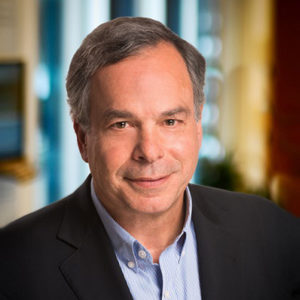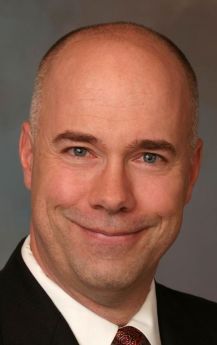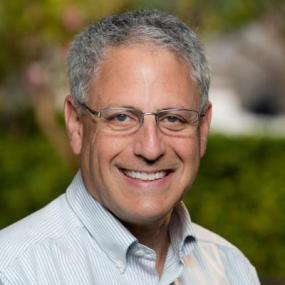We have found a new home! Kindly visit this link in our new website here: https://www.denver-frederick.com/2017/11/29/ryan-merkley-chief-executive-officer-creative-commons-joins-denver-frederick/
The following is a conversation between Ryan Merkley, Chief Executive Officer of Creative Commons, and Denver Frederick, Host of The Business of Giving on AM 970 The Answer.
Denver: How many of you have seen those two small Cs, CC with a circle around it on a picture or on a file and have asked: “I wonder what the significance of that is!” If you have ever wondered, you’ll wonder no more, thanks to my next guest. He is Ryan Merkley, the Chief Executive Officer of the nonprofit organization represented by those two Cs, Creative Commons.
Good evening, Ryan, and welcome to The Business of Giving.
Ryan: Good evening. Thanks for having me.
Denver: Tell us about Creative Commons and the mission and objectives of the organization.
Ryan. Sure. Creative Commons is an international nonprofit, and we are known best for being the creators of the CC licenses. They are a set of copyright licenses that allow people to share their works if they wish under a set of standard terms. Things like “You may use this work so long as you credit me and link back to the original.” Or “You may use this work so long as you credit me and you don’t use it for a commercial purpose. I only want it for nonprofit purposes.” We’ve made those licenses for about 16 years now, and they have been used on just about every copyrightable work you can think of, about 1.2 billion works around the world.
You’ve probably seen them embedded in tools or platforms that you use every day, things like Flickr or YouTube or SoundCloud. And our licenses are usually an option that you can select if you’re someone who shares on those platforms.
Denver: Creative Commons was founded by a Harvard Law School professor and political activist Larry Lessig. What inspired him to start this organization and movement?
Ryan: I love this story because it’s one where, when something good is coming out of something frustrating. A couple of weeks ago, I was at an open education conference that was in Anaheim, California, and we were talking about being so close to Disney. And it’s really, in a strange way, Walt Disney’s fault that we exist. It was the 1998 Sonny Bono Copyright Extension Act, an act of Congress to extend the term of copyright from life plus 50 years to life plus 70 years that got us all into this in the first place.
Lawrence Lessig, our founder, was frustrated that Congress was going to extend that term, not just for new works, but actually retroactively to everything that had been created before.
Most people don’t know that almost everyone holds copyright and today’s copyright regime, from the minute you put pen-to-paper– the minute you create the fixed work they call it– you have a copyright on that work for your life plus 70 years. You don’t need to do anything. You don’t have to register it. You don’t have to mark it. It’s yours for a period of time that it almost feels like forever because by the time you’re dead, and then 70 years pass, very rarely does that work have any or a lot of relevance to the world. And certainly, that urgent relevance that comes from current culture is long gone.
Denver: That’s insane.
Ryan: And he thought that was unfair. And so, he fought a case all the way to the Supreme Court, what’s known as the Eldred Case. And when Eldred agreed to be part of that case, he said, “If you’re going to do this, I want you to do something to make copyright easier for people.” So it’s not just a law suit. Now in the end, Lawrence and Eldred lost that case. But CC was born as a result. The idea that we should make it easier for people to share their copyright if they want to. Most people don’t know that almost everyone holds copyright in today’s copyright regime, from the minute you put pen-to-paper– the minute you create the fixed work they call it– you have a copyright on that work for your life plus 70 years. You don’t need to do anything. You don’t have to register it. You don’t have to mark it. It’s yours for a period of time that it almost feels like forever because by the time you’re dead, and then 70 years pass, very rarely does that work have any or a lot of relevance to the world. And certainly, that urgent relevance that comes from current culture is long gone.
Denver: So our listeners are listening to a copyrighted broadcast. Correct?
Ryan: They are.
Denver: So how does this work in practice, Ryan? Suppose I’ve written something or uploaded a photo on Flickr and want to share it now in some way through Creative Commons, what do I need to do?
Ryan: There are two ways. The first is: if you’re using a platform like Flickr or YouTube that already has CC tools built into the platform, when you upload, you’ll have a choice. And so, I’m a Flickr user. And so I upload my photo, and I have an option to change the setting that says “What permissions do I want to give people so that they can use, without asking, my work under those terms?” And so I like to use”CC By” which means you can use my work as long as you credit me and you link back to the original work that I shared. So I use that all the time. And lots of people do that. It’s actually one of our most popular licenses.
Denver: You said there are 1.2 billion licenses on Creative Commons. Do you consider that to be a lot or a little?
Ryan: The short answer is both. There are trillions of works around the world, and because copyright is automatic, every work that enters the world is born closed. It is born locked down by what we call” All rights reserved copyright” or “standard copyright” which really just means no one can use your work unless you give them explicit permission. And so, in one sense, 1.2 billion is very small compared to the grand scope of all the things that humans have created. In the other sense, it’s a huge deal because over a period of 15 years, in every single case, someone had to choose to share, and they had to decide to set that default from closed to open. And the fact that people have done that over 1.2 billion times, I think is remarkable. And so, the short answer is: it’s both. It’s a big deal; or it’s a lot and it’s a little.
What The Met decided to do was share their digital collection of public domain works under what we call the CC0 public domain dedication– which is zero restrictions. No credit, no link, nothing. You can just use it.
Denver: And I think a big deal for Creative Commons was earlier this year when the Metropolitan Museum of Art added 375,000 images.
Ryan: Yeah. That was a spectacular moment… and also the end of a very long project for us working with The Met to get there. So, The Metropolitan Museum of Art has digital versions of works that are already in the public domain. And well it may seem obvious that every institution should share those things because they’re already open, that isn’t often the case, and they make investments in order to share them. But we want them to put those works out there so that everybody can use them. So, what The Met decided to do was share their digital collection of public domain works under what we call the CC0 public domain dedication– which is zero restrictions. No credit, no link, nothing. You can just use it. And really, that’s how the public domain is supposed to work. The copyright isn’t like other property. It’s meant to be: the right of copyright is a balance between the public’s rights and the creator’s rights. And eventually, that term was supposed to end, and what happened when it ended is that everybody got it because everything is built on top of everything that came before it. And so what The Met did was wonderful. We were very excited that they did it, and we hope that it will lead other institutions to follow along. And there are other institutions that have done it as well, like The Rijksmuseum in Amsterdam.
Denver: That’s great news. You operate in dozens and dozens of countries across the world. How do you create a legal framework that addresses all the specific laws of each one of these countries?
Ryan: Very carefully. We do it primarily in collaboration. So the CC license tools, when they began, when that small group of mostly lawyers were in a basement in Stanford inventing the license tools, they built the licenses for the United States and the US legal context. And then over time, they worked with legal experts, country by country, to port the licenses. It’s a term we borrow from software which really just means: adapt to a different legal context. So, in the early days of CC, the first three versions of the licenses, you would have the US license, and then you would have a ported license for another country… So, the CC license for Canada or the CC license for India.
About three year ago, four years ago now, I guess, CC completed a two-year collaborative process with all of our international affiliates to create one license, the International 4.0 License. So now, we have one legal license that considers all the legal context around the world so that you can use that license anywhere. So, when you license a work in China, that work is covered by copyright in the US and vice versa.
Denver: That is a Herculean task. Congratulations on that. And that’s why you try do everything so that it is made simple for the user, and that certainly does it. Let’s get back to copyright law a little bit because it is a bit ironic that in this age where everything is accessible and people are creating in collaboration– a lot of that is due to the internet and cellphones– these copyright laws, as you described, are so darn restrictive. Is there any hope or chance of changing that?
Ryan: Well, I’m hopeful, and it’s certainly a big part of the work that Creative Commons does. One of the things that we try to do is make copyright laws more reflective of the way people actually create and share. Today’s laws were more or less written for large rights holders. And to be fair, in the beginning, that’s how they were written as well. The copyright laws were originally written for book publishers at a time when pretty much the only way that you could copy something is if you owned a printing press. That world has changed dramatically, obviously. And even since Creative Commons began, the idea that every single person would carry a device that could shoot HD video in their pocket was not on the table.
The idea of social media– that we would all share photos all day long– was not a thing that even we contemplated in 2001 when CC was just getting started. Social media didn’t come into the forefront until the mid-2000s. So, the world has dramatically changed. Everyone is a copyright holder. But not only is everyone a copyright holder, but everyone is making things that are worth sharing and that they want to share. And today’s laws don’t reflect that remotely. So, the people end up in scenarios where they are essentially violating copyright all day long. They’re making, as Clay Doctorow says, a thousand copies before breakfast because that’s how the internet works. It’s based on copies. We need something smarter than that. And what’s frustrating is that most of these debates are led by large rights holders protecting their specific interest, and there’s very little discussion about regular everyday people who are making copies all day long and who are making copyrighted works all day long, whether they want to or not; and they need tools to share.
Denver: Yeah. And to put this in a little bit of context, I believe that a patent is only good for 20 years?
Ryan: That’s right.
Denver: So this just shows the insanity of how this is compared to something like that. Let me ask you one last question about that. In the front of all the books that I read so often or at the end of a television show, I see these words “All rights reserved”. What does that mean exactly?































